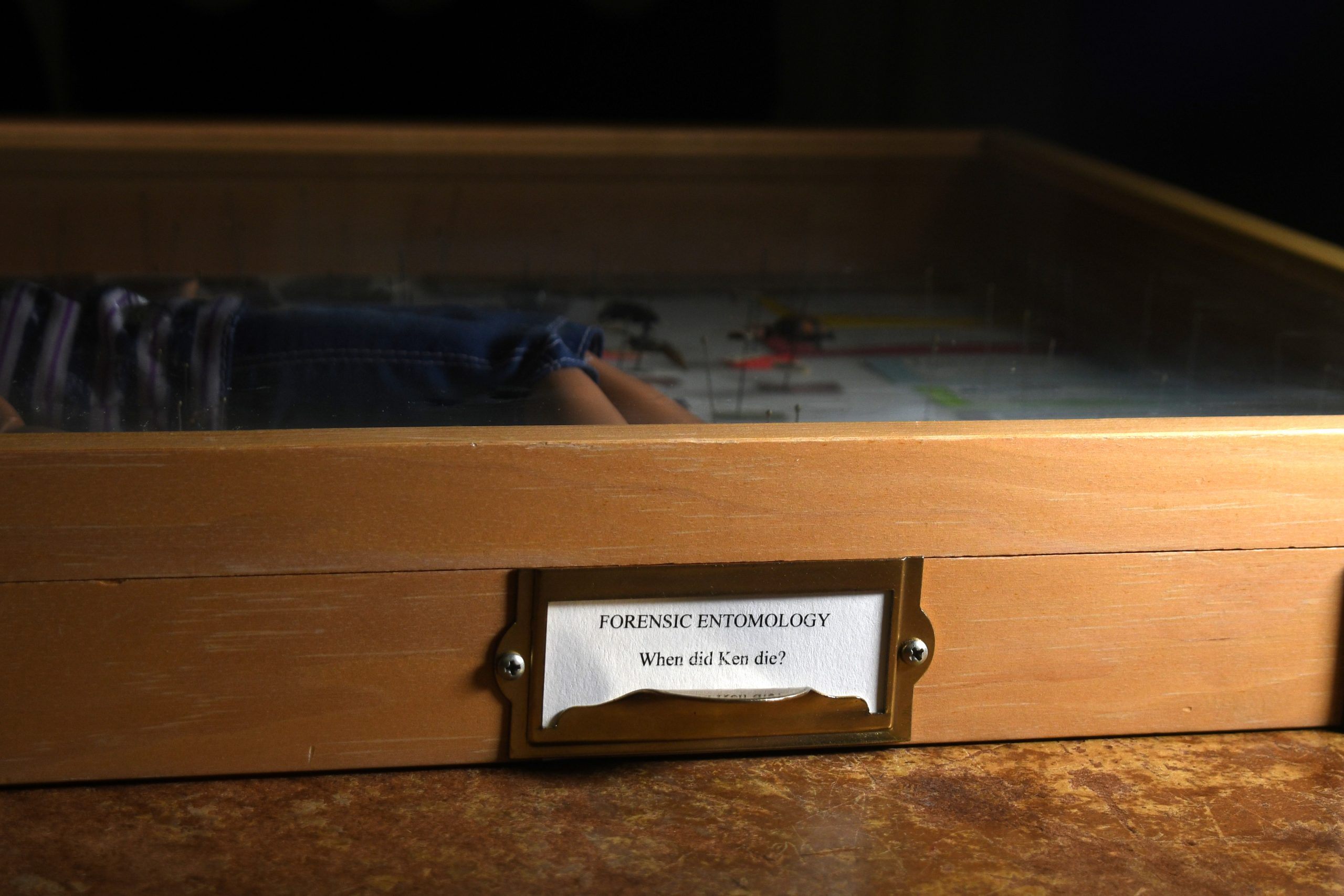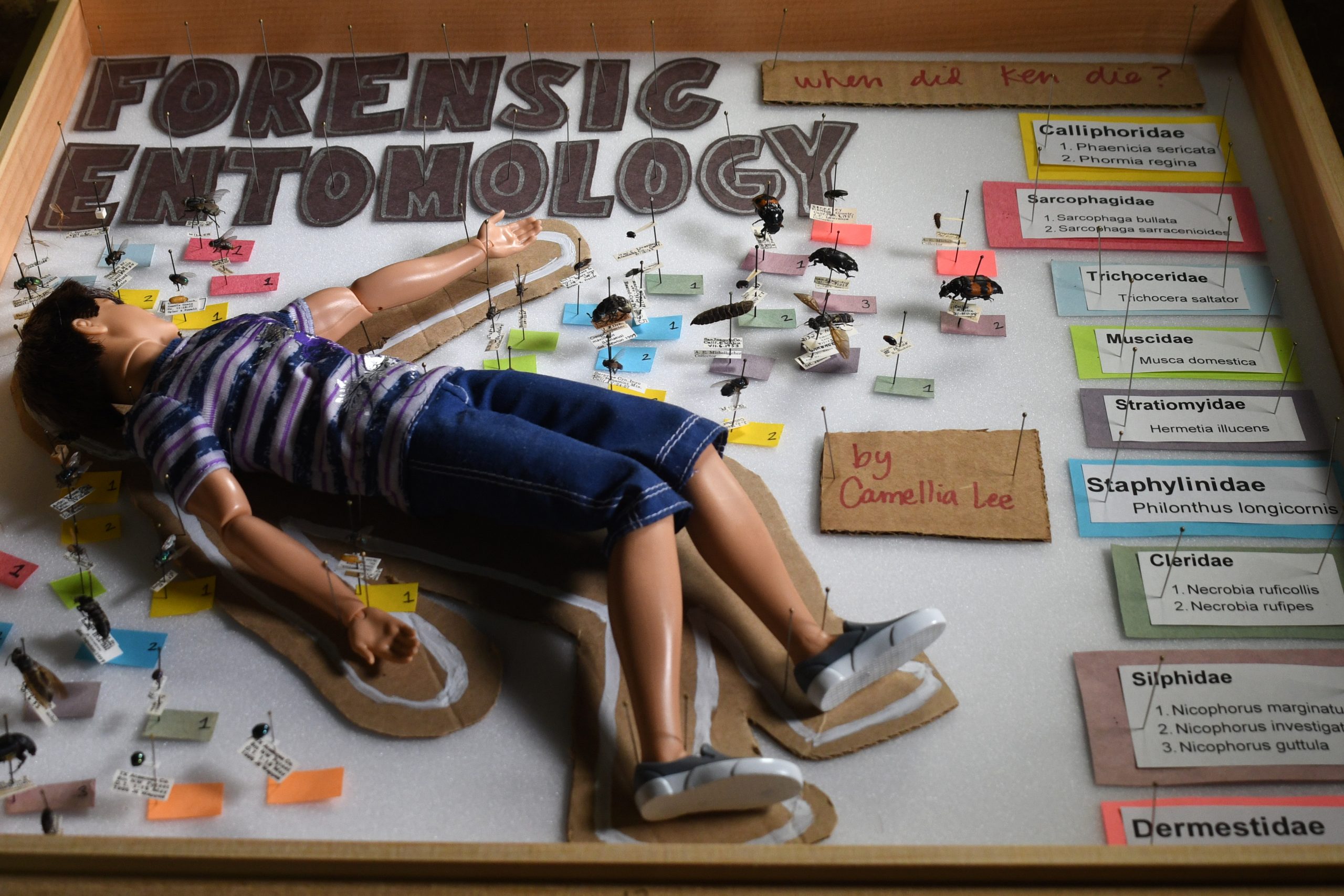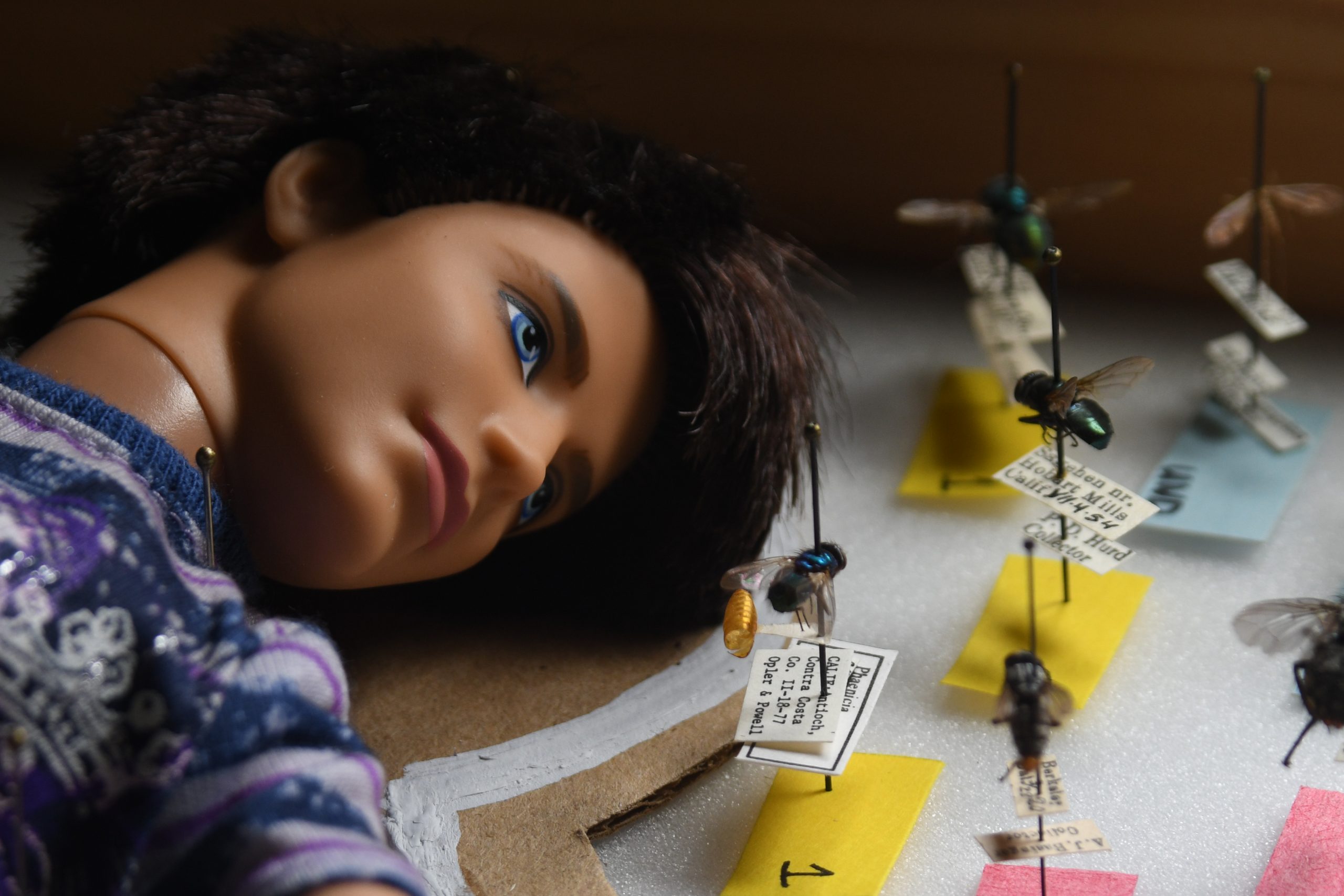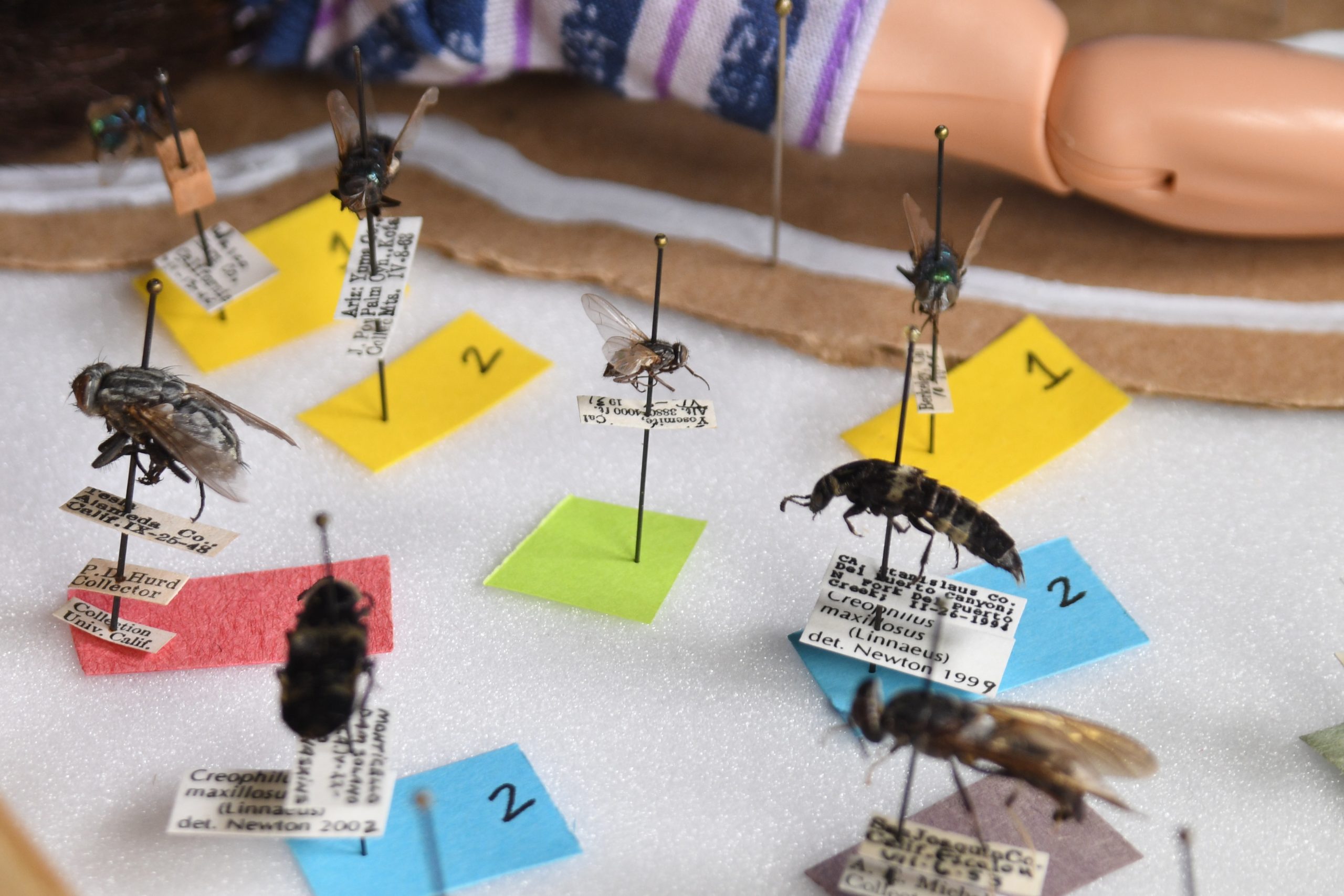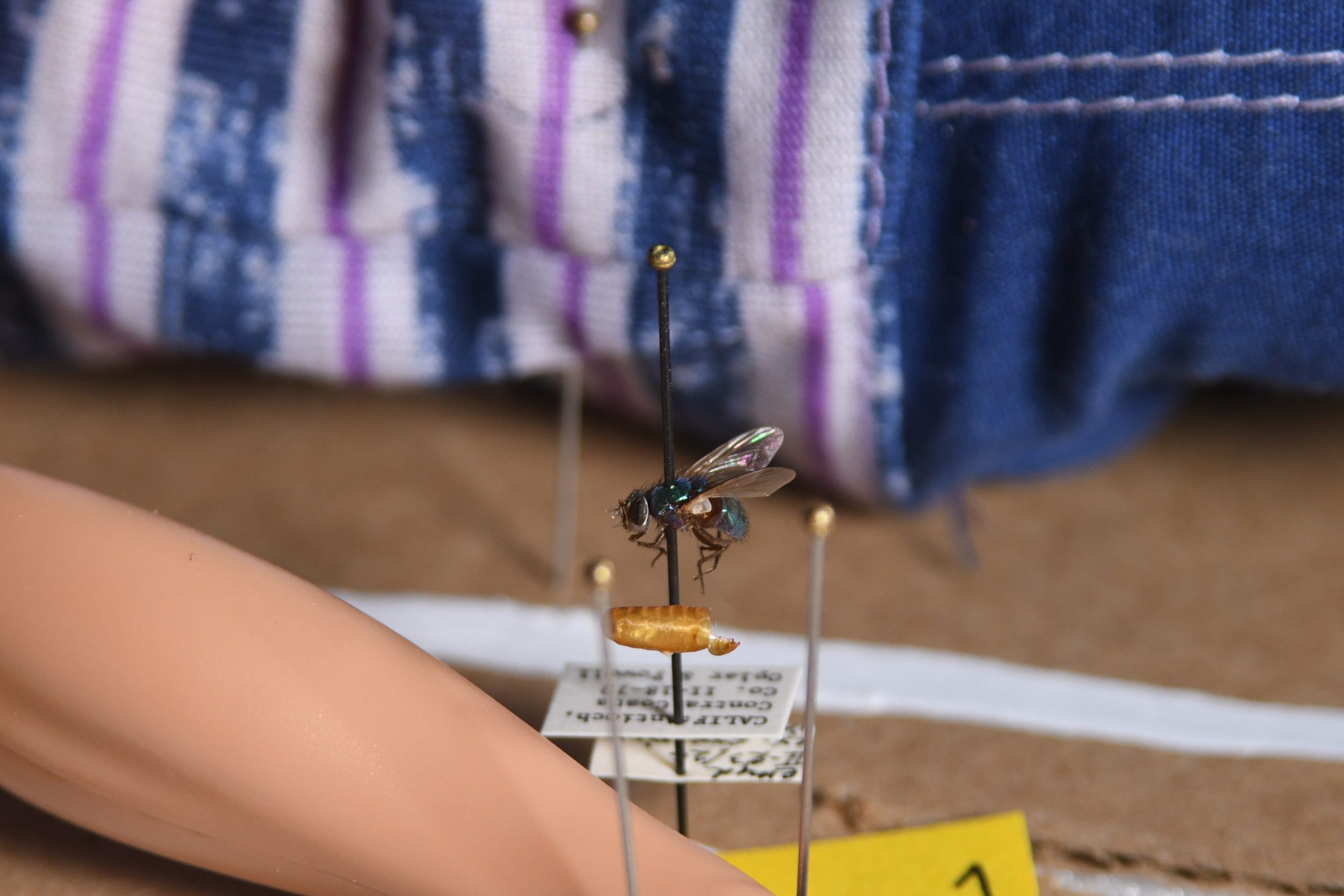FORENSIC ENTOMOLOGY
In forensic entomology, time of death can be determined from the insects found on a corpse. By analyzing the larval age and development times of various species attracted to dead bodies (humans as well as wildlife) time of death often can be assessed with an accuracy of a day or less. This method is used in the first few weeks after death. Insects follow predictable developmental cycles. Eggs are laid in batches on the corpse and hatch after a set amount of time. The insect continues to feed and molt to its various larval stages (or instars). When a larva is ready to pupate it will wander away from the body and look for a safe place to metamorphose into an adult and the cycle will begin again. Each developmental stage takes a known amount of time that varies with the temperature of the environment. Analyzing the oldest insects on the corpse and the temperature of the region in which the body was discovered leads to a day or range of days when the eggs were first laid on the corpse. This in turn, leads to a day or range of days that death occurred.
During decomposition, the corpse undergoes rapid physical, biological, and chemical changes. The different stages of decomposition are attractive to different species of insects. Certain species of insects often arrive within a few hours after death. Calliphoridae (blowflies) and Sarcophagidae (fleshflies) arrive at the body first, while other insects only find the body attractive after it undergoes protein fermentation, which gives off odors some insects find attractive. Some species are not attracted to the body directly, but arrive to feed on the other insects at the scene. Analyzing the succession of insects provides a window of time in which death took place and even the season (using the exoskeletons left behind after the insects have moved on).
In the gruesome scene illustrated here, the insects found closest to Ken’s body are those that arrived first, while insects furthest from the body arrived last. Forensic entomology requires very precise knowledge of the local insect fauna and their various life stages and developmental times.


